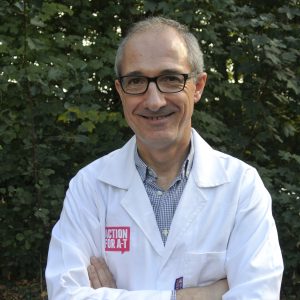Further development of CRISPR/Cas Genome Editing as a Treatment for Ataxia Telangiectasia
Research Project information
Principal researcher: Professor Rafael Yáñez-Muñoz
Institute: Royal Holloway, University of London
Cost: £40,000 over 36 months
Completion Date: March 2025
Project Overview
This project was an extension to a previous project. This extension funded the use of donated human blood stem cells to test methods to repair specific mutations in the gene responsible for ataxia-telangiectasia (A-T).
Research Methods and Outcome
CRISPR genome editing technology is a very effective method to introduce defined changes in the cellular genome, and hence may allow the repair of mutations causing A-T. There are hundreds of different A-T mutations, and the team worked with two specific mutations, one of which is relevant to 10-15% of UK A-T patients. In the previous project they demonstrated that they could repair these two mutations in patient cells modified to live indefinitely in the laboratory. Following these successful experiments on laboratory cells, they started using blood stem cells from donors not affected by A-T. Blood stem cells can be returned to people following genetic modification, allowing the correction of diseases affecting production of blood cells and the immune system. They used donor cells because they are much easier to obtain than stem cells from people affected by A-T, which would be the next step if the procedure was successful. Their results indicate that they can introduce the desired genome changes in the donor stem cells. This suggests that the methods used may allow correction of the two A-T gene mutations if applied to blood stem cells from people with A-T. The team carried out analyses to check for possible negative effects of the CRISPR editing process on the genome of the treated cells. The results in this respect were also encouraging.
What next?
The team are currently sourcing blood stem cells from A-T patients with the two relevant mutations to further test their genome editing methods.





